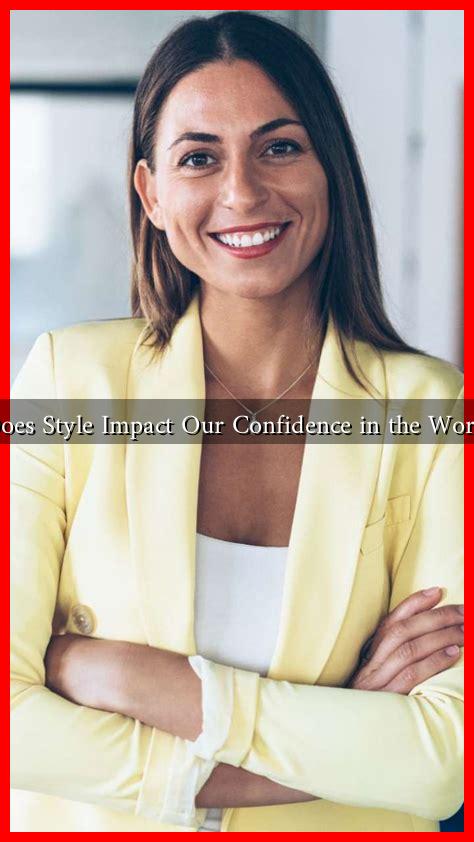-
Table of Contents
How Does Style Impact Our Confidence in the Workplace?
In today’s fast-paced and competitive work environment, the way we present ourselves can significantly influence our confidence levels and overall success. Style, encompassing clothing, grooming, and personal presentation, plays a crucial role in shaping perceptions—both our own and those of others. This article explores how style impacts confidence in the workplace, supported by research, examples, and practical insights.
The Psychology of Style
Research in psychology suggests that our clothing choices can affect our mood and self-perception. This phenomenon is often referred to as “enclothed cognition,” which posits that the clothes we wear can influence our psychological states and performance. A study published in the journal Social Psychological and Personality Science found that participants who wore formal clothing performed better on cognitive tasks than those in casual attire. This indicates that dressing well can enhance our cognitive abilities and, consequently, our confidence.
First Impressions Matter
In the workplace, first impressions are often formed within seconds. According to a study by the Forbes Coaches Council, it takes just seven seconds for someone to form an opinion about you based on your appearance. This underscores the importance of style in creating a positive first impression. Here are some key elements that contribute to effective first impressions through style:
- Professionalism: Dressing appropriately for your industry signals that you take your role seriously.
- Attention to Detail: Well-fitted and clean clothing suggests that you care about your appearance and the impression you make.
- Confidence: Wearing clothes that make you feel good can boost your self-esteem, which is often reflected in your body language and interactions.
Style and Workplace Dynamics
Style not only affects individual confidence but also influences workplace dynamics. A well-dressed employee may be perceived as more competent and capable, which can lead to increased opportunities for advancement. Conversely, a lack of attention to personal style can result in being overlooked for promotions or important projects. Here are some ways style impacts workplace dynamics:
- Authority and Leadership: Leaders who dress well are often viewed as more authoritative and trustworthy.
- Team Cohesion: A shared sense of style within a team can foster unity and a sense of belonging.
- Networking Opportunities: Dressing appropriately for networking events can enhance your chances of making valuable connections.
Case Studies and Real-World Examples
Numerous case studies illustrate the impact of style on workplace confidence. For instance, a tech company implemented a “dress for your day” policy, allowing employees to choose their attire based on their tasks. This flexibility led to increased job satisfaction and confidence among employees, resulting in a 20% boost in productivity.
Another example is the fashion brand Bonobos, which emphasizes the importance of fit and style in its marketing. By promoting well-fitted clothing, Bonobos has helped countless men feel more confident in their professional lives, leading to increased sales and customer loyalty.
Practical Tips for Enhancing Workplace Style
To leverage style for increased confidence in the workplace, consider the following tips:
- Know Your Audience: Understand the dress code of your workplace and adapt your style accordingly.
- Invest in Key Pieces: A few high-quality, versatile items can elevate your wardrobe without breaking the bank.
- Grooming Matters: Regular grooming and personal hygiene are essential components of a polished appearance.
- Wear What Makes You Feel Good: Choose styles that resonate with your personality and make you feel confident.
Conclusion
In conclusion, style plays a pivotal role in shaping our confidence in the workplace. From influencing first impressions to affecting workplace dynamics, the way we present ourselves can have far-reaching implications for our careers. By understanding the psychology behind style and implementing practical strategies to enhance our appearance, we can boost our confidence and improve our professional prospects. Remember, investing in your style is not just about looking good; it’s about feeling empowered to succeed.

